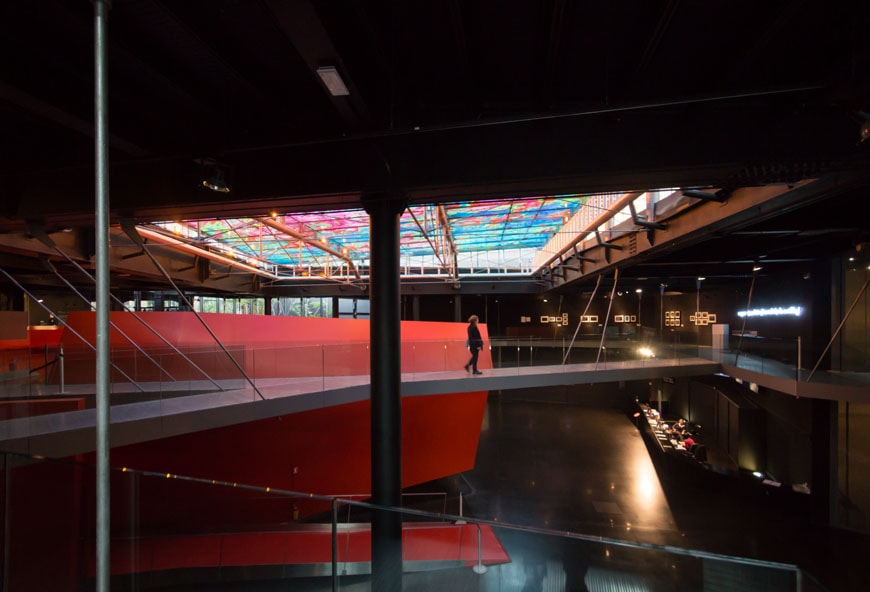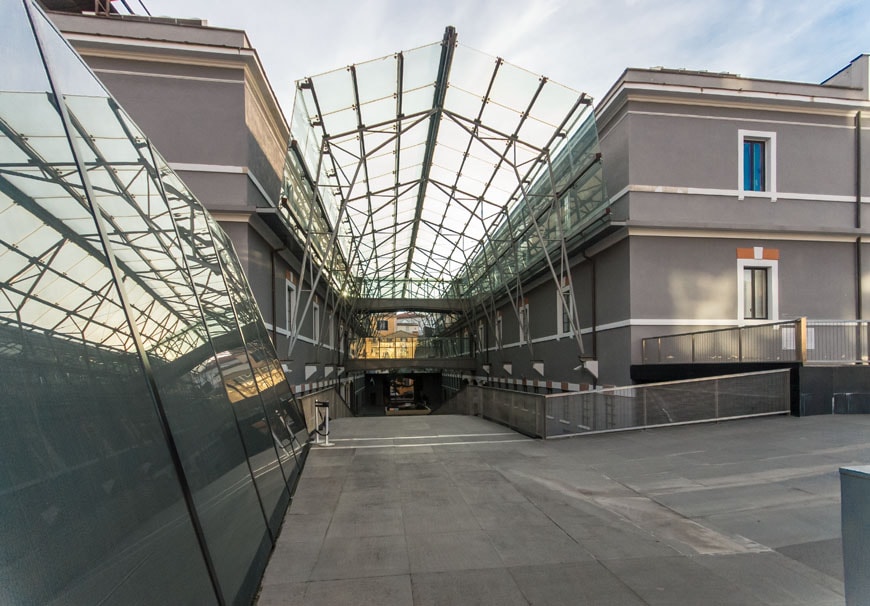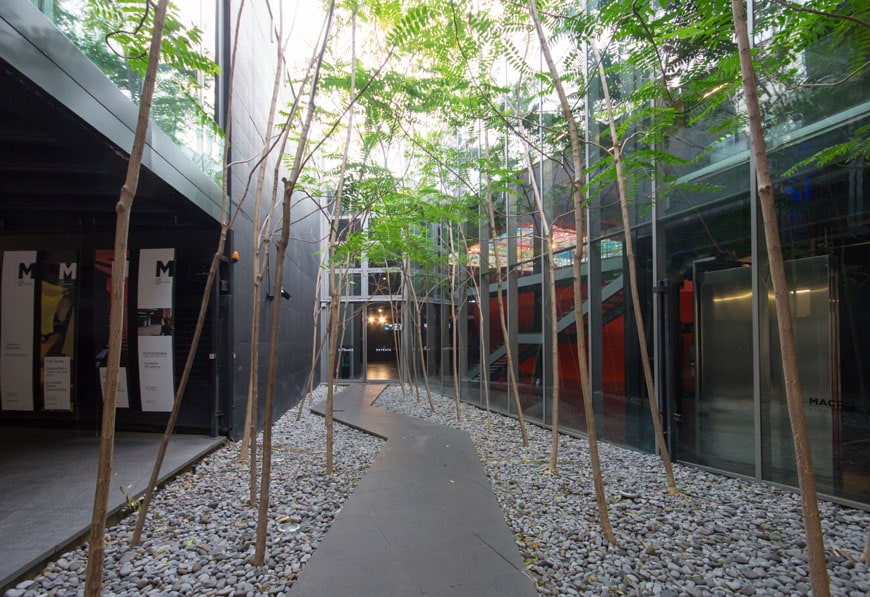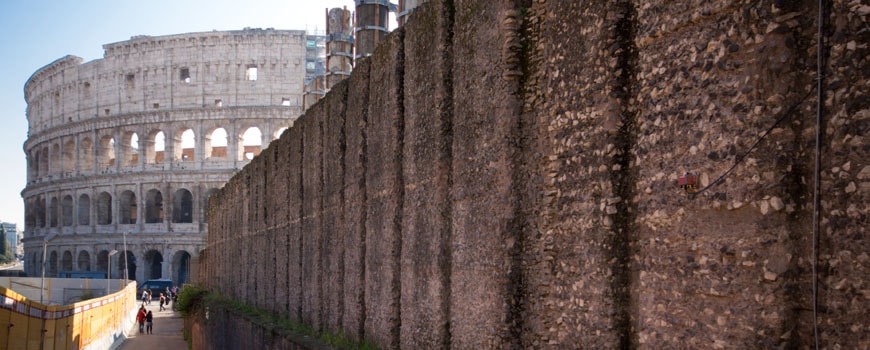MACRO Museum of Contemporary Art, Rome
Lazio, Italy
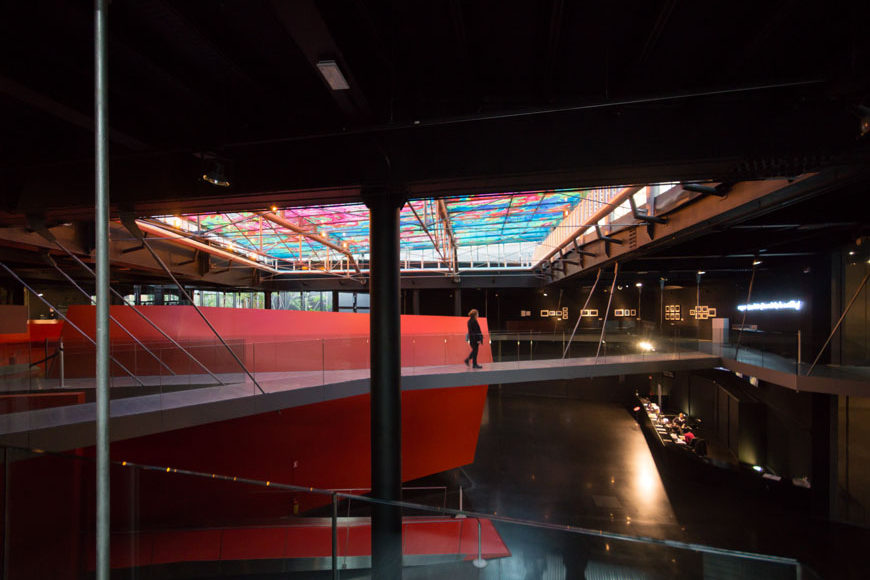
The MACRO – Museum of Contemporary Art of Rome is a museum dedicated to modern and contemporary art from the 1960s onward.
Building and site
The MACRO opened to the public in the late 1990s and has been expanded in the early 2000s; the museum’s building is located on the site of a former brewery once belonging to the Peroni brand, located on Via Nizza in the Salario-Nomentano, a semi-central neighborhood mostly built in the 19th century.
The museum’s 10,000-square-meter / 108,000-square-foot internal space – marked by a red volume, which contains an auditorium, standing in the middle of the entrance lobby – also accommodates areas for exhibitions and special events, a bookshop, educational spaces, a library, and a cafe.
What to see at MACRO
The MACRO displays art pieces from its permanent collection on a rotational basis through semi-permanent exhibitions and also features a diverse program of temporary exhibitions, workshops for children, film screenings, and conferences.
The architecture of Odile Decq’s MACRO expansion – an in-depth analysis
The MACRO complex we see today is the result of an expansion project that approximately triplicated the original floor area of the museum, and for which an international design competition was organized in 2001 by the Municipality of Rome. The Art Nouveau edifice of the Peroni brewery was built between 1912 and 1932 to a design by the famous architect Gustavo Giovannoni. Due to the historical importance of Giovannoni’s building, the architectural competition saw the confrontation between two different approaches. On one side, many proposals – like the runner-up design by Nicola Di Battista – adopted a careful and neutral approach to the addition of modern structures to the site, while others – including the winning entry by French architect Odile Decq – dared a more bold concept, adding a radically contemporary architecture to the old constructions.
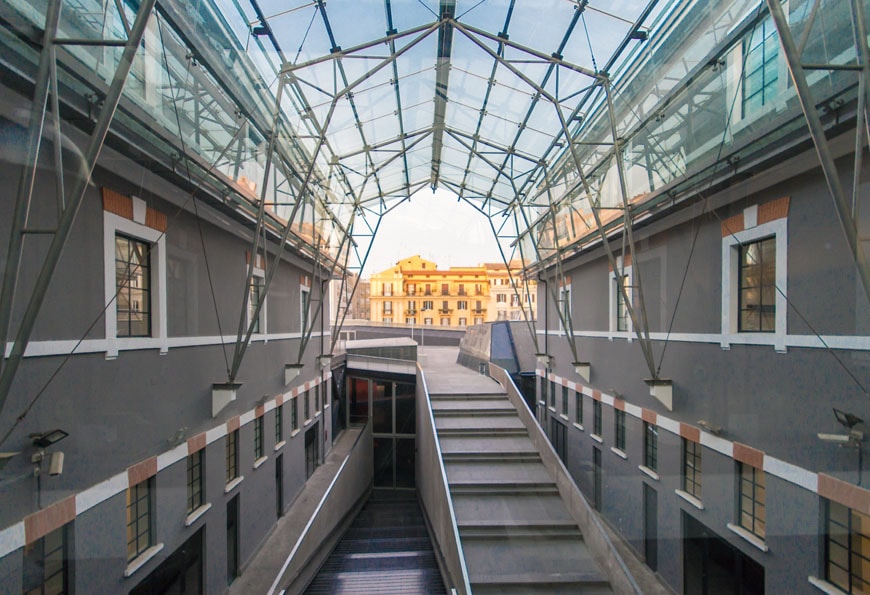
The expansion project created a dialogue between old and new structures. Photo © Inexhibit, 2015
The expansion by Odile Decq is based on a precise scheme: new, flexible, spaces which include a large lobby, exhibition spaces, and visitor services, are added to the historical buildings and renovated to accommodate more traditional exhibition galleries. The lobby is characterized by a set of suspended bridges organized around the red volume of a small auditorium.
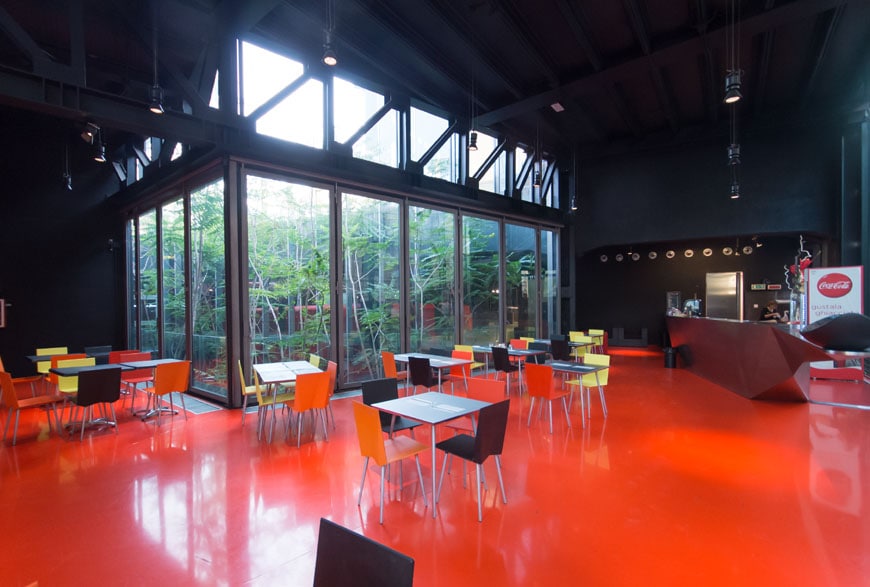
From top to bottom: the lobby, one of the exhibition galleries, and the cafe. Photo © Inexhibit, 2015
A large ceiling window pours natural light into this cavernous space, which somehow resembles an etching by Piranesi.
This wing is topped by a large roof terrace, a gathering and multipurpose open-air space, overlooking the city, conceived to accommodate special events, presentations, and performances, and where also a panoramic restaurant is located.

The red micro-architecture of the auditorium. Photo © Inexhibit, 2015
The roof terrace. Photo © Inexhibit, 2015
The design by the French architect features a rigorous color scheme: black and dark gray for the lobby space, red for the auditorium and the cafeteria, and white for the exhibition galleries. Most of such galleries are located inside the old buildings, which still retain their historic industrial character and provide more neutral, intimate spaces for the display of artworks.
One of the exhibition spaces in the old industrial building. Photo © Inexhibit, 2015
Odile Decq placed the public entrance of the museum at the corner between via Nizza and via Cagliari, the visitors walk through a narrow zen-like garden lined with Trees of Heaven (Ailanthus altissima) which enhances the surprising effect of entering the fluid, large space of the museum lobby.
The museum entrance on via Nizza. Photo © Inexhibit, 2015
The entrance garden with the Trees of Heaven grove. Photo © Inexhibit, 2015
In the middle of the lobby space, the geometric volume of the small auditorium, clad in red-lacquered wood, stands like the heart in a chest. The roof of this small building is a sort of large podium which overlooks the lobby.

The red auditorium and the small podium on its top. Photo © Inexhibit, 2015
The expansion increased the floor area of the MACRO from 3,890 to 13,940 square meters (41,870 to 150,000 square feet) and included the new lobby, the auditorium-conference room, exhibition spaces, a cafeteria, a restaurant, a library, artist-in-residence workshops, and educational spaces, plus a 5,650-square-meter underground park.
Many critics have made a confrontation between Odile Decq’s MACRO and the other major museum of contemporary art opened in Rome the same year, the MAXXI by Zaha Hadid.
Apart from sharing some common aspects (they are among the few public museums of modern art inaugurated in Italy in decades, they were designed by two of the few female “starchitects”, they share a similar cultural mission), the two museums are quite different in their architecture and particularly in their approach to the relationship between historical pre-existences and new buildings.
While the MAXXI is an “extroverted” architecture where the imposing addition (never fully completed, it is worth remembering) is both visibly distinct from the old buildings and clearly discernible from the street, the MACRO copes with the constraints of a tighter site and a more urban environment by creating an “introverted” architecture which, despite its indubitable visual strength, nevertheless remains somehow intimate and familiar.
How our readers rate this museum (you can vote)
copyright Inexhibit 2024 - ISSN: 2283-5474

